UC Gardening Blogs
Through the Garden Gate: “The Crape Myrtle’s are blooming like nobody’s business!
During this time of year, our outside world is full of blooming Crape Myrtles. (Lagerstroemia), If you are wondering which spelling is correct (Crape Myrtle, Crapemyrtle, Crepe Myrtle, or Crepemyrtle), they are all acceptable and any may be seen on plant tags, in an article or web search. Crape Myrtle is probably the most used common name in California. You may want to use “Lagerstroemia” to be safe, which is used all over the world.
Crape myrtles are native to India, China, SE Asia, Japan, Australia, and Oceana, and is now cultivated in warmer climates around the world. it was first introduced in the U.S. in the south (Charleston, South Carolina) in 179. It was quickly dubbed “crepe myrtle” due to its myrtle-shaped leaves and petals resembling crepe fabric. Lagerstroemia is not related to True or Common Myrtle (Myrtus communis).
There are about 50 species of Lagerstroemia, with many new varieties, ranging in many shades of red, pink, white, and purple, All are woody plants, including both deciduous and evergreen varieties, ranging in sizes from dwarfs to 100-foot trees. They are chiefly known for their long-lasting summer blooms, but also have beautifully mottled bark and most have colorful fall foliage.
Pruning is important since blooms come on new wood. The question that arises is when and how much to prune. As with all pruning, there are different ideas as to when is best. Certainly, the worse time is when they are blooming, which I have seen done (ouch!). Once the bush is established and shaped as you prefer, less severe trimming should be adequate to maintain the size and shape.
Mildew can be a problem in our area during our long, wet winter. These trees prefer full sun, so if your bush is under a large tree canopy, or mostly shaded by buildings, it can promote the growth of mildew. Good air circulation also minimizes the chance for mildew growth. If planting a new crape myrtle, find one that is a mildew-resistant hybrid. Almost all selections with names of Native American tribes, such as ‘Hopi', ‘Miami', and ‘Zuni', are mildew resistant.
For information on care and treatment of crape myrtles, including powdery mildew, there are 38 article listings in the UCANR Repository at this web address. Search for “crape myrtle”.
https://ucanr.edu/repository/
For some interesting folklore about the Myrtles Plantation, including marriage under the crepe myrtle trees, George Washington, yellow fever, promiscuity, murder and death by birthday cake laced with crushed oleander flowers, go to the American Hauntings web site below to find: “The Myrtles Plantation: Legends, Lore and Lies.”
https://www.americanhauntingsink.com/myrtles
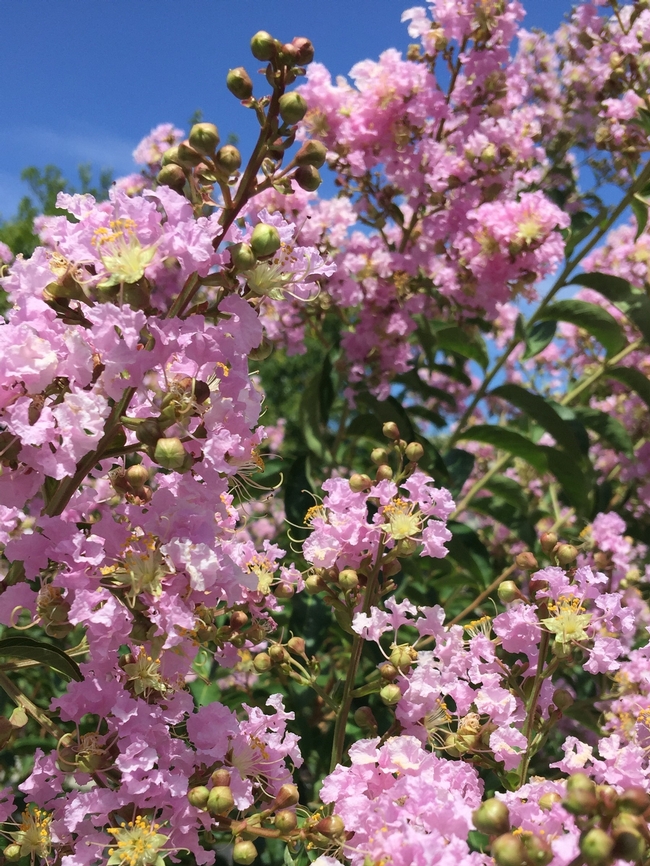
photos by Dave Bellamy

Red Crape Myrtle full
The Laborious Honey Bee
Today is Labor Day 2019, a federal holiday celebrated the first Monday of September. However, "the...
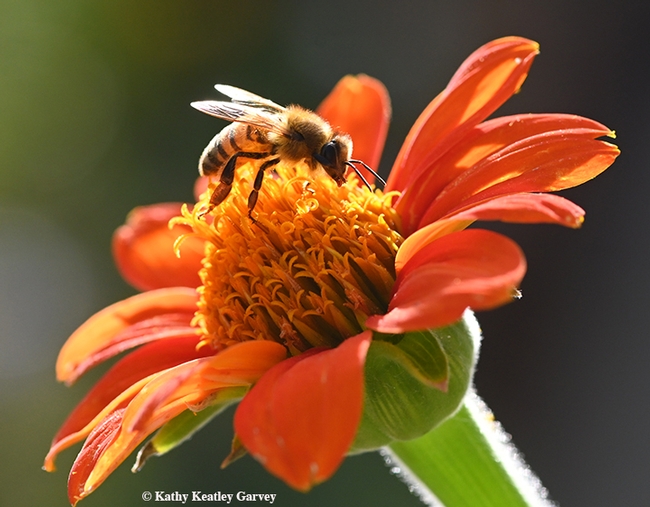
A worker honey bee forages on a Mexican sunflower (Tithonia) in the magic hour, the hour before sunset. (Photo by Kathy Keatley Garvey)
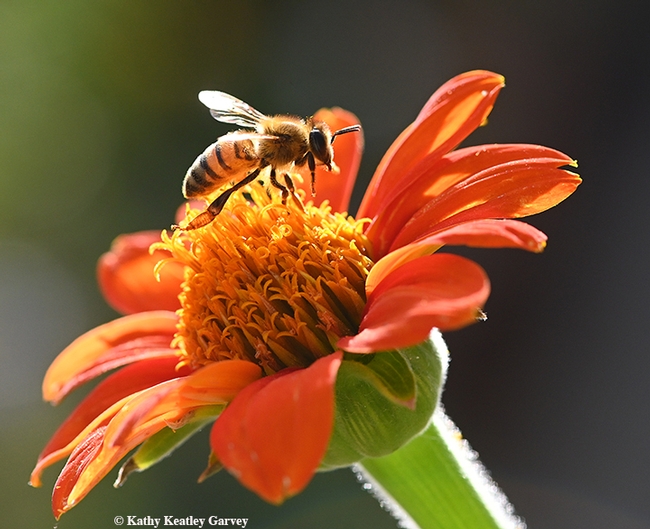
Illuminated by the late afternoon sun, the worker bee prepares to fly to another Tithonia blossom. (Photo by Kathy Keatley Garvey)
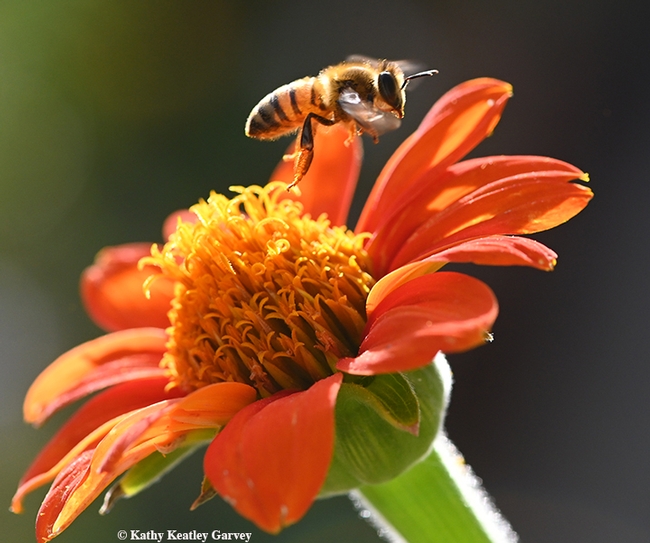
A worker bee takes flight, lifting over a Mexican sunflower (Tithonia). (Photo by Kathy Keatley Garvey)
Celebration of Life Set Oct. 11 for Robbin Thorp, 1933-2019
The date is set. The celebration of life for global bee expert Robbin Thorp, distinguished...
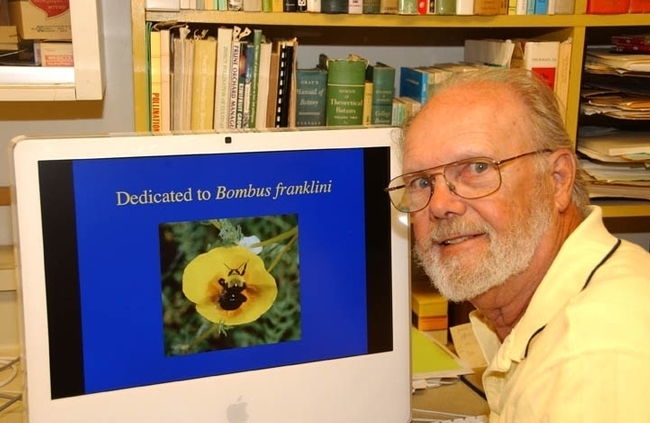
Robbin Thorp with his screensaver, an image he took of the critically imperiled Franklin's bumble bee. (2007 Photo by Kathy Keatley Garvey)
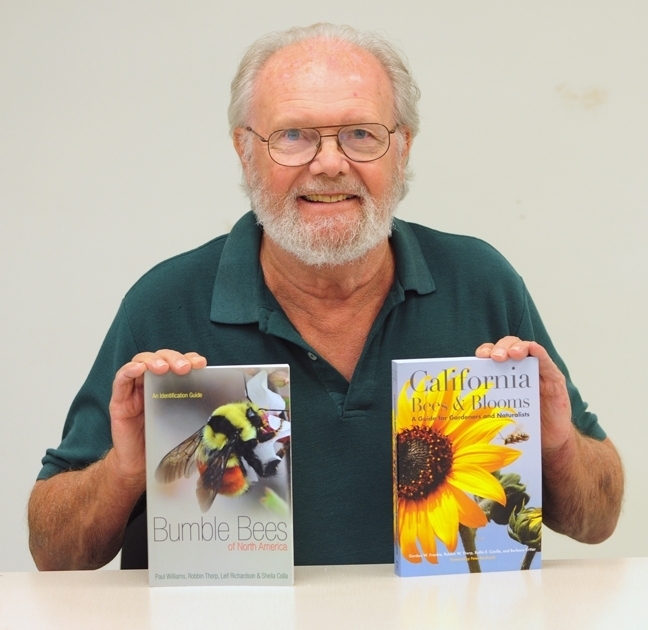
Robbin Thorp with two of the books he co-authored in 2014. (Photo by Kathy Keatley Garvey)
An Unexpected Visitor
We had a surprise visitor in the middle of the day a couple of weeks ago. Stretched out across our tiny patch of grass in our backyard was a large snake. He or she had yellow stripes running the length of both sides of the dark brown body, round pupils and no rattles. Whew! Not a rattlesnake. I did some quick research on California Herps website and found that our visitor was likely a striped racer.
Striped racer snakes are lumped in with gopher snakes and eat small birds, lizards, frogs, rodents, small snakes and some insects. They are diurnal. We have had a lot of lizards darting around our yard this year. Our dog Bindi, a McNab – a type of herding dog, likes to hunt lizards. She doesn't do anything to them. She just stalks them and then stands frozen watching them. It's kind of a faceoff and pretty funny to watch. I am guessing that the snake found our backyard to be an all-you-can-eat buffet.
I was able to take a couple of quick pictures with my cell phone and then quick-as-a-flash, he or she zipped across the walkway and disappeared in the California fuchsia and under the fence into the safety of the neighbor's woodpile. I wonder if that snake is still around, though. There don't seem to be as many lizards. Hmmm.
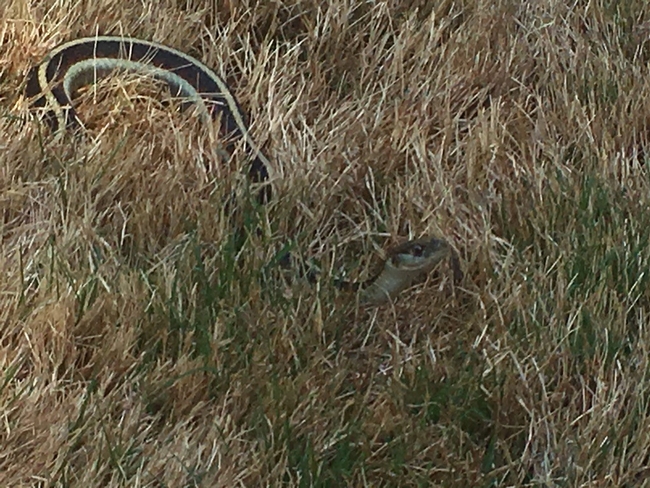
photos by Michelle Davis
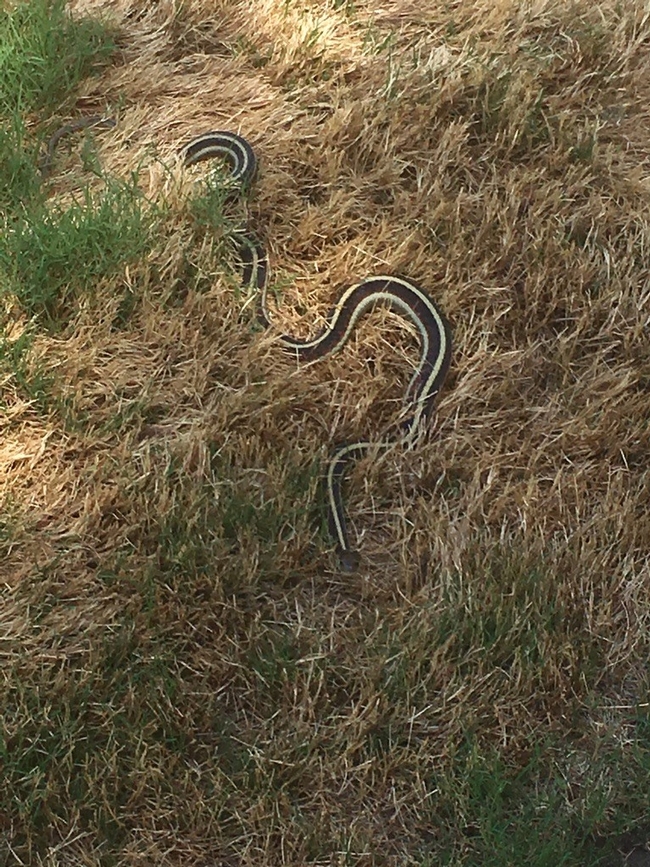
racer 2
UC Davis Bee Classes Are 'The Bees' Knees'
If you want to bee-come a beekeeper, bee scientists at the University of California at Davis will...
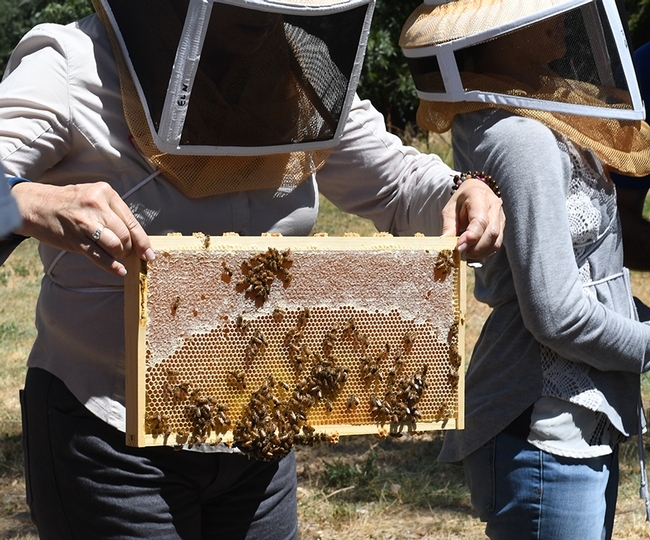
A student in the UC Davis class, "Planning Ahead for Your First Hive," holds a frame. (Photo by Kathy Keatley Garvey)
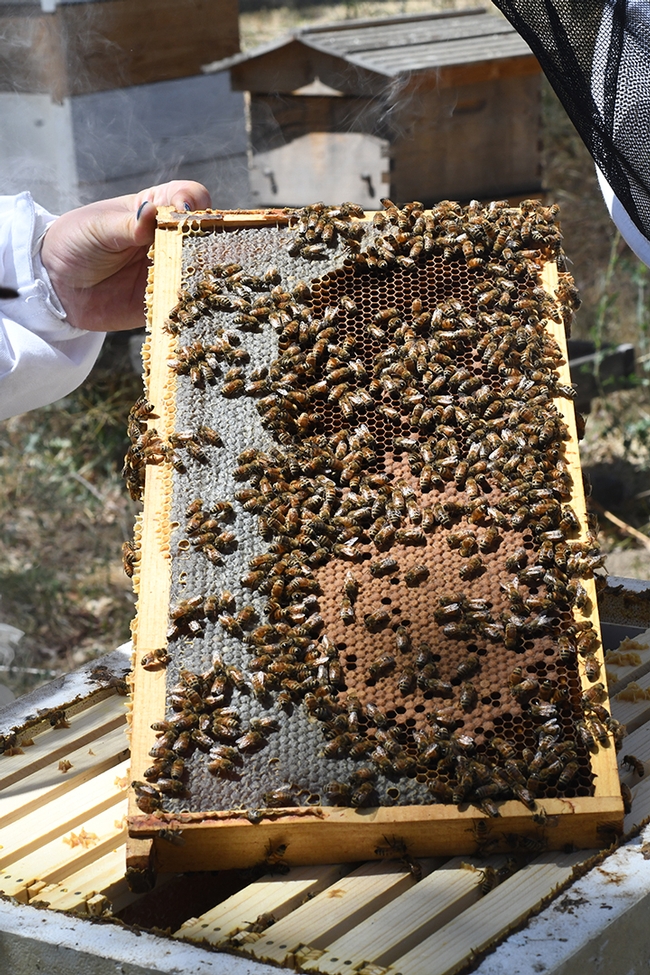
Close-up of a frame. (Photo by Kathy Keatley Garvey)
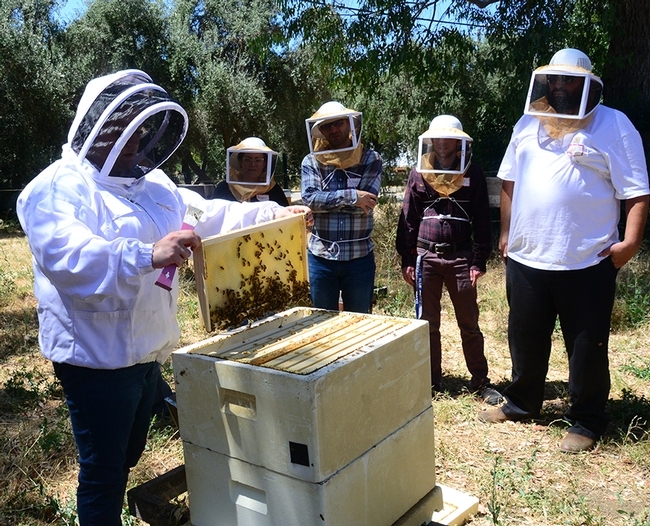
Extension apiculturist Elina Lastro Niño opens a hive as the students gather around. (Photo by Kathy Katley Garvey)
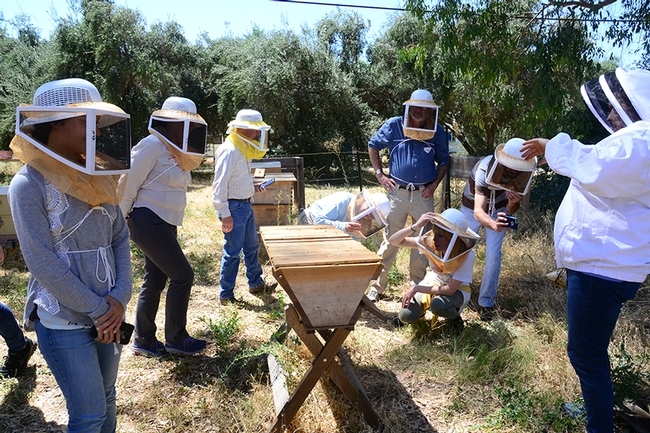
Participants in the UC Davis class, "Planning for Your First Hive," learn about the top bar hive. (Photo by Kathy Keatley Garvey)
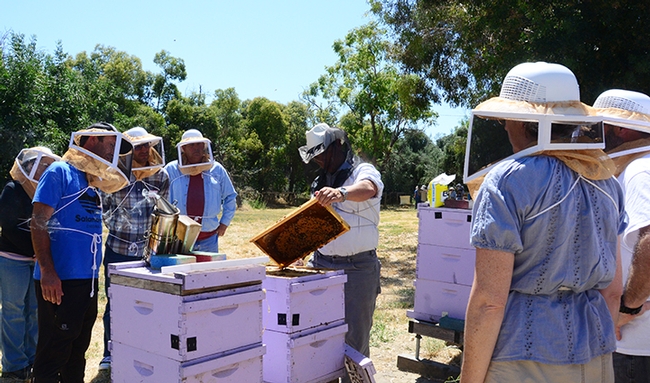
UC Davis research assistant Bernardo Niño examines a frame. He is the educational supervisor for the California Master Beekeeper Program, which conducts bee classes. (Photo by Kathy Keatley Garvey)
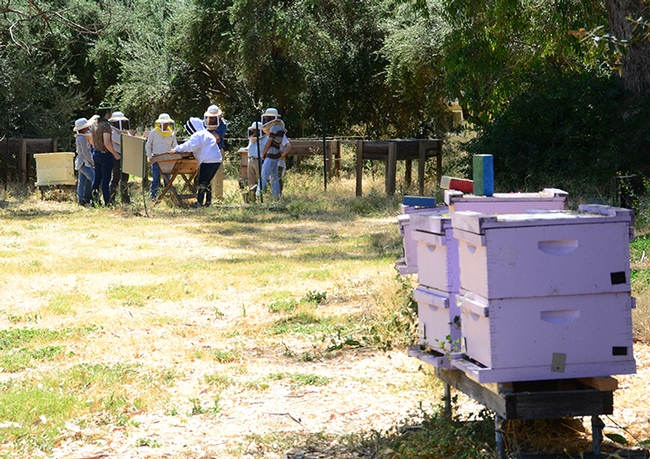
A hive in the foreground is teeming with bees. In the background, students in a UC Davis class learn about bees. (Photo by Kathy Keatley Garvey)



